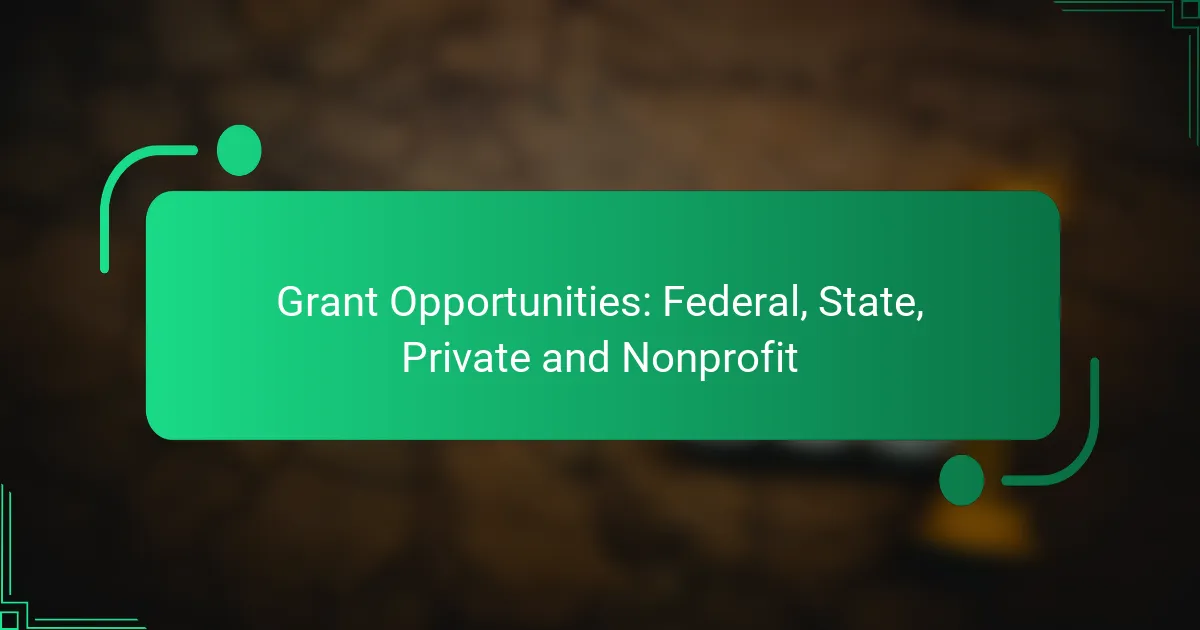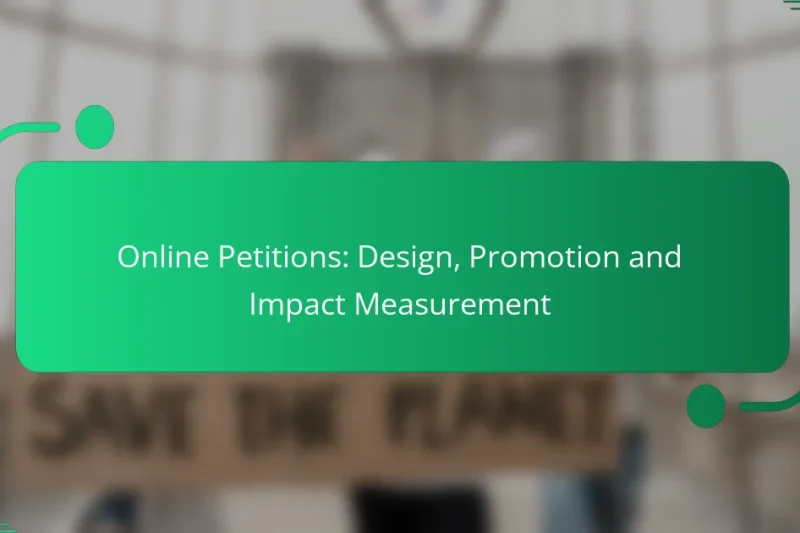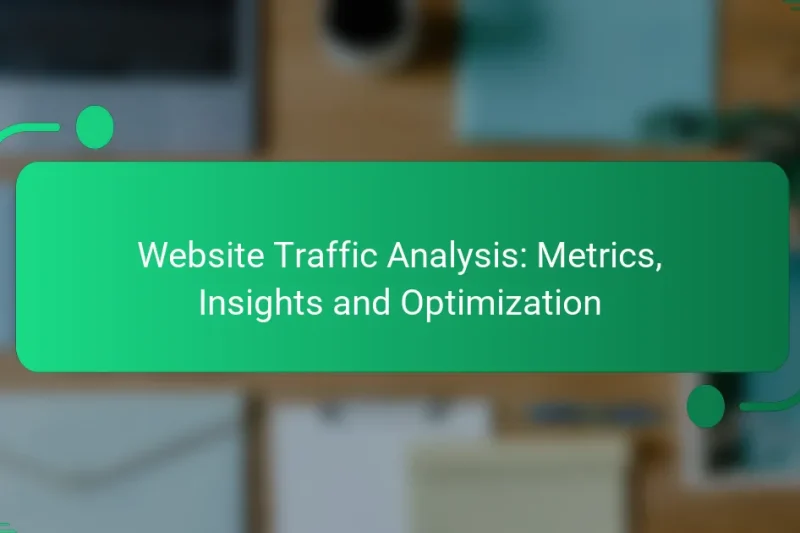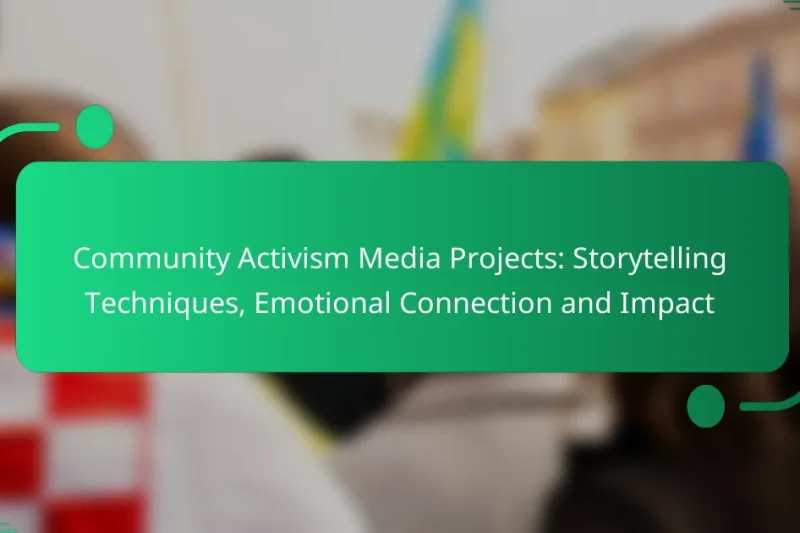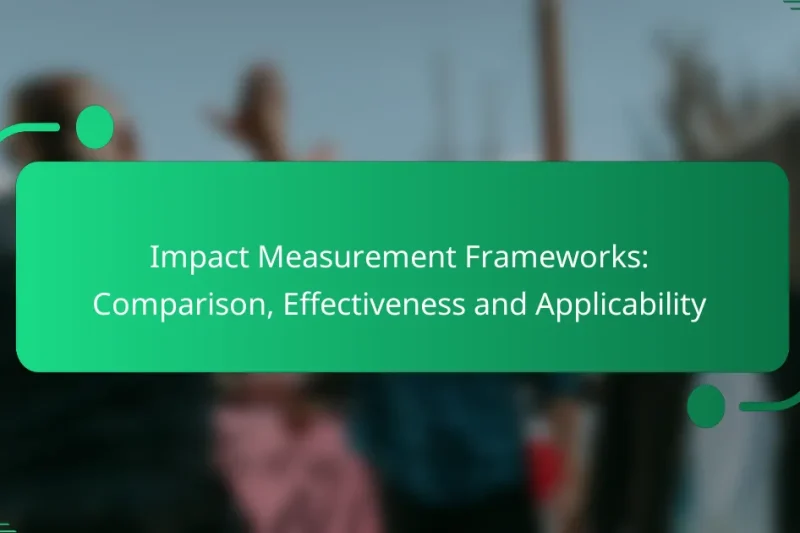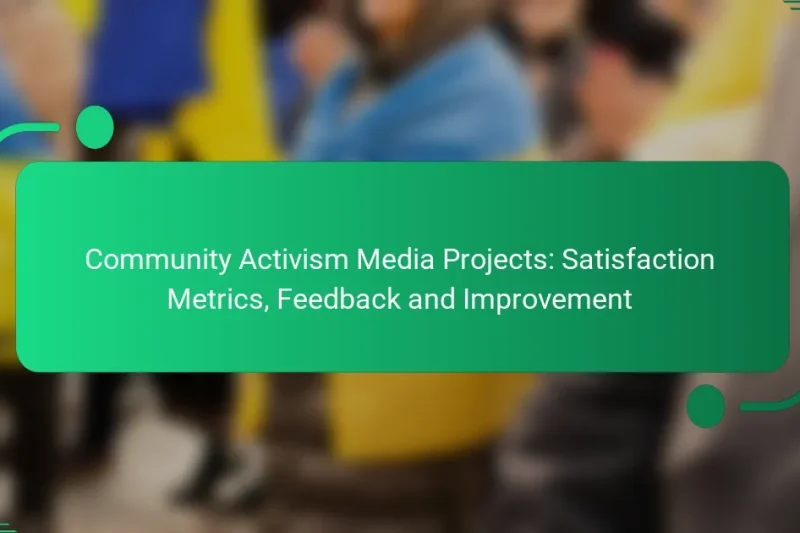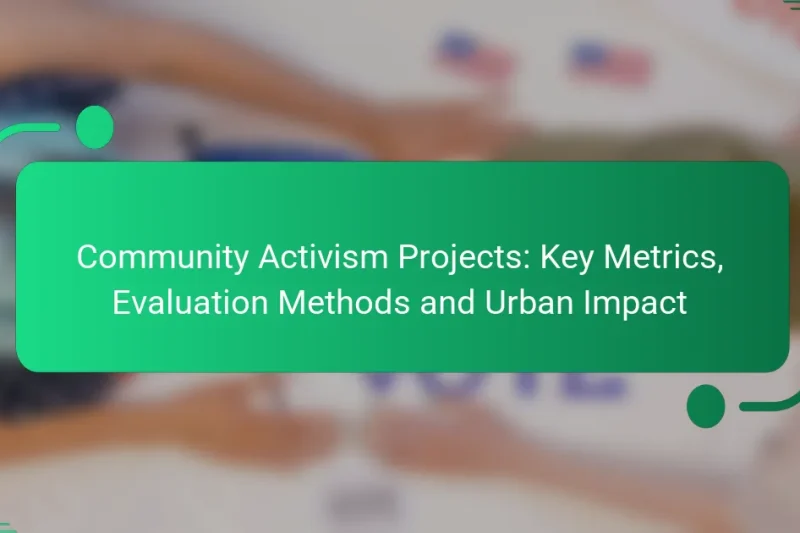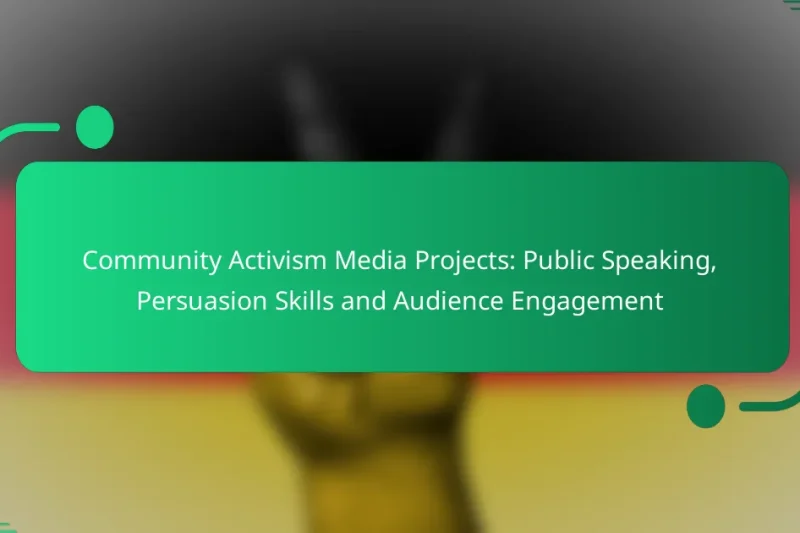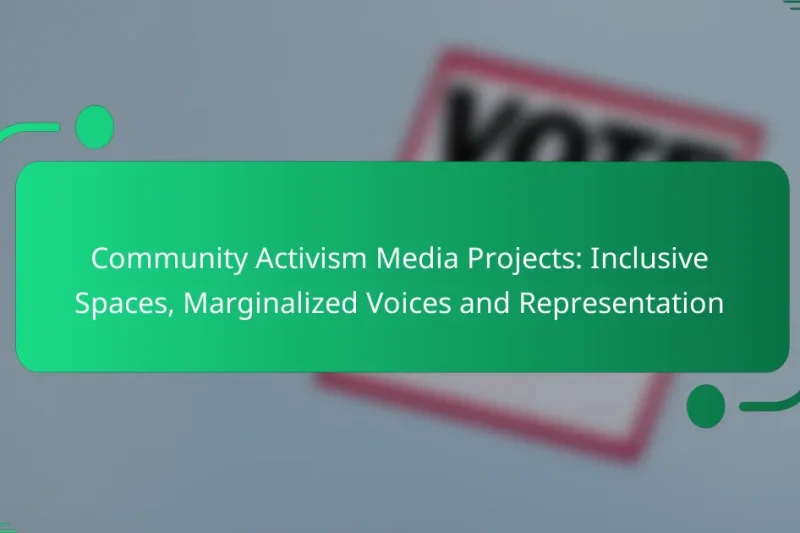Corporate sponsorships can be a powerful way to enhance your project’s visibility while providing businesses with … Corporate Sponsorships: Approaching Businesses, Proposal Tips and BenefitsRead more
Community activism media projects play a crucial role in driving social change by raising awareness and amplifying the voices of marginalized groups. By utilizing various media platforms, these initiatives engage communities, foster collaboration, and influence policy decisions. Effective strategies and essential tools are key to enhancing visibility and creating impactful narratives that resonate with the target audience.
Online Petitions: Design, Promotion and Impact Measurement
Online petitions serve as powerful tools for advocacy, designed to effectively communicate a cause and mobilize … Online Petitions: Design, Promotion and Impact MeasurementRead more
Grant Opportunities: Federal, State, Private and Nonprofit
Exploring grant opportunities can open doors to essential funding for various projects, whether through federal, state, … Grant Opportunities: Federal, State, Private and NonprofitRead more
Website Traffic Analysis: Metrics, Insights and Optimization
Website traffic analysis is crucial for understanding user behavior and optimizing online performance. By focusing on … Website Traffic Analysis: Metrics, Insights and OptimizationRead more
Community Activism Media Projects: Storytelling Techniques, Emotional Connection and Impact
Community activism media projects leverage the power of storytelling to create emotional connections that resonate deeply … Community Activism Media Projects: Storytelling Techniques, Emotional Connection and ImpactRead more
Impact Measurement Frameworks: Comparison, Effectiveness and Applicability
Impact measurement frameworks play a crucial role in assessing and communicating the outcomes of various programs … Impact Measurement Frameworks: Comparison, Effectiveness and ApplicabilityRead more
Community Activism Media Projects: Satisfaction Metrics, Feedback and Improvement
Community activism media projects thrive on understanding participant satisfaction and engagement. By utilizing effective metrics and … Community Activism Media Projects: Satisfaction Metrics, Feedback and ImprovementRead more
Community Activism Projects: Key Metrics, Evaluation Methods and Urban Impact
Community activism projects play a vital role in urban areas by enhancing quality of life and … Community Activism Projects: Key Metrics, Evaluation Methods and Urban ImpactRead more
Community Activism Media Projects: Public Speaking, Persuasion Skills and Audience Engagement
Community activism media projects offer valuable opportunities to enhance public speaking and persuasion skills, enabling participants … Community Activism Media Projects: Public Speaking, Persuasion Skills and Audience EngagementRead more
Community Activism Media Projects: Inclusive Spaces, Marginalized Voices and Representation
Community activism media projects play a vital role in empowering marginalized voices by providing essential platforms … Community Activism Media Projects: Inclusive Spaces, Marginalized Voices and RepresentationRead more
How can community activism media projects drive social change?
Community activism media projects can effectively drive social change by raising awareness, mobilizing resources, and amplifying marginalized voices. These initiatives leverage various media platforms to engage communities, foster collaboration, and influence policy decisions.
Increased awareness of local issues
Community activism media projects play a crucial role in highlighting local issues that may otherwise go unnoticed. By using social media, blogs, and local news outlets, these projects can inform residents about pressing concerns such as housing, education, and public health.
For example, a project focused on environmental justice might document pollution levels in a neighborhood, prompting community discussions and actions. This increased awareness can lead to greater public engagement and advocacy for change.
Mobilization of community resources
These media projects can mobilize community resources by connecting individuals and organizations with shared goals. They often serve as platforms for fundraising, volunteer recruitment, and resource sharing, enabling communities to pool their efforts effectively.
For instance, a local campaign to improve public transportation may use media to organize community meetings, gather donations, and coordinate volunteer efforts, ultimately leading to a stronger collective impact.
Empowerment of marginalized voices
Community activism media projects empower marginalized voices by providing a platform for individuals to share their stories and perspectives. This representation is vital in addressing social inequalities and fostering inclusivity.
Projects may include workshops that teach media skills to underrepresented groups, allowing them to create their own content. This not only amplifies their voices but also encourages community solidarity and understanding.
Creation of collaborative networks
These projects often lead to the creation of collaborative networks among various stakeholders, including activists, local businesses, and government entities. By fostering partnerships, they enhance the effectiveness of community efforts.
For example, a media initiative focused on youth education might bring together schools, nonprofits, and local businesses to develop programs that support students. These networks can lead to sustainable change and shared resources.
Influence on policy decisions
Community activism media projects can significantly influence policy decisions by raising public awareness and mobilizing community action. When communities come together to advocate for specific issues, they can create pressure on policymakers to respond.
For instance, a campaign highlighting the need for affordable housing may lead to local government discussions about zoning laws and funding allocations. Engaging the community through media ensures that their voices are heard in the decision-making process.
What are effective strategies for launching media projects?
Effective strategies for launching media projects include leveraging digital platforms, engaging community figures, crafting engaging stories, and forming alliances with local organizations. These approaches can enhance visibility, foster collaboration, and create impactful narratives that resonate with the target audience.
Utilizing social media platforms
Social media platforms are essential for reaching a broad audience quickly and cost-effectively. Focus on platforms like Facebook, Instagram, and Twitter, which allow for targeted advertising and community engagement. Regularly post updates, behind-the-scenes content, and interactive polls to keep your audience engaged.
Consider using hashtags relevant to your project to increase visibility. Engaging with followers through comments and messages can also build a sense of community around your media project.
Engaging local influencers
Local influencers can amplify your message and lend credibility to your media project. Identify individuals who align with your project's values and have a genuine connection to the community. Reach out to them with clear proposals on how they can contribute, whether through social media shoutouts or participation in events.
Building relationships with these influencers can lead to mutually beneficial partnerships, increasing your project's reach and engagement. Be sure to recognize their contributions publicly to foster goodwill.
Creating compelling narratives
Compelling narratives are crucial for capturing attention and driving engagement. Focus on storytelling that highlights personal experiences or community issues relevant to your audience. Use a mix of formats, such as videos, articles, and podcasts, to convey your message effectively.
Incorporate emotional elements and relatable characters to make your narrative resonate. Consider using a clear structure with a beginning, middle, and end to guide your audience through the story.
Building partnerships with organizations
Forming partnerships with local organizations can enhance your media project's credibility and resources. Identify organizations that share similar goals and values, and propose collaborative initiatives that benefit both parties. This could include co-hosting events, sharing content, or cross-promoting each other's work.
Such partnerships can provide access to new audiences and additional funding opportunities. Ensure that the partnership is mutually beneficial by clearly outlining roles and expectations from the outset.
What tools are essential for community activism media projects?
Essential tools for community activism media projects include video production software, graphic design tools, social media management platforms, and survey and feedback tools. These resources help activists effectively communicate their messages, engage audiences, and gather valuable insights.
Video production software
Video production software is crucial for creating compelling visual content that can capture attention and convey messages effectively. Popular options include Adobe Premiere Pro, Final Cut Pro, and more accessible tools like iMovie or Canva's video editor. Consider your team's skill level and project requirements when choosing software.
When producing videos, focus on clarity and engagement. Aim for videos that are typically 1-3 minutes long to maintain viewer interest. Always include captions to make your content accessible to a wider audience.
Graphic design tools
Graphic design tools enable activists to create eye-catching visuals for social media, flyers, and other promotional materials. Tools like Canva, Adobe Spark, and GIMP offer user-friendly interfaces and a variety of templates to streamline the design process. Choose a tool that fits your budget and design needs.
Keep in mind the importance of branding and consistency in your designs. Use a cohesive color palette and font style across all materials to strengthen your message and increase recognition.
Social media management platforms
Social media management platforms help streamline the process of posting, monitoring, and engaging with audiences across various social media channels. Tools like Hootsuite, Buffer, and Sprout Social allow you to schedule posts, analyze performance, and respond to comments efficiently. Select a platform that aligns with your social media strategy and budget.
Regularly analyze engagement metrics to understand what content resonates with your audience. Adjust your strategy based on these insights to maximize your outreach and impact.
Survey and feedback tools
Survey and feedback tools are essential for gathering insights from your community and measuring the effectiveness of your activism efforts. Platforms like SurveyMonkey, Google Forms, and Typeform allow you to create surveys that can be easily distributed and analyzed. Choose a tool that offers the features you need, such as branching logic or customizable templates.
When designing surveys, keep questions clear and concise to encourage participation. Aim for a mix of quantitative and qualitative questions to gain a comprehensive understanding of community opinions and needs.
How do community media projects measure impact?
Community media projects measure impact through a combination of quantitative metrics and qualitative feedback. These approaches help assess the effectiveness of initiatives and their influence on the community.
Quantitative metrics analysis
Quantitative metrics analysis involves collecting numerical data to evaluate the reach and engagement of community media projects. Common metrics include audience size, frequency of content consumption, and social media interactions.
For instance, tracking website visits or video views can provide insights into how many people are engaging with the content. Additionally, surveys can quantify audience demographics, helping to tailor future projects effectively.
Qualitative feedback collection
Qualitative feedback collection focuses on gathering subjective insights from community members about their experiences with media projects. This can be achieved through interviews, focus groups, or open-ended survey questions.
Such feedback is valuable for understanding the emotional and social impact of the projects. It can reveal community needs and preferences that numbers alone may not capture, guiding future content development.
Case studies and success stories
Case studies and success stories provide concrete examples of how community media projects have made a difference. These narratives can illustrate specific outcomes, such as increased community engagement or improved local awareness on critical issues.
Documenting these successes helps build credibility and can inspire other initiatives. Sharing these stories through various platforms can also enhance visibility and attract support from stakeholders and funders.


